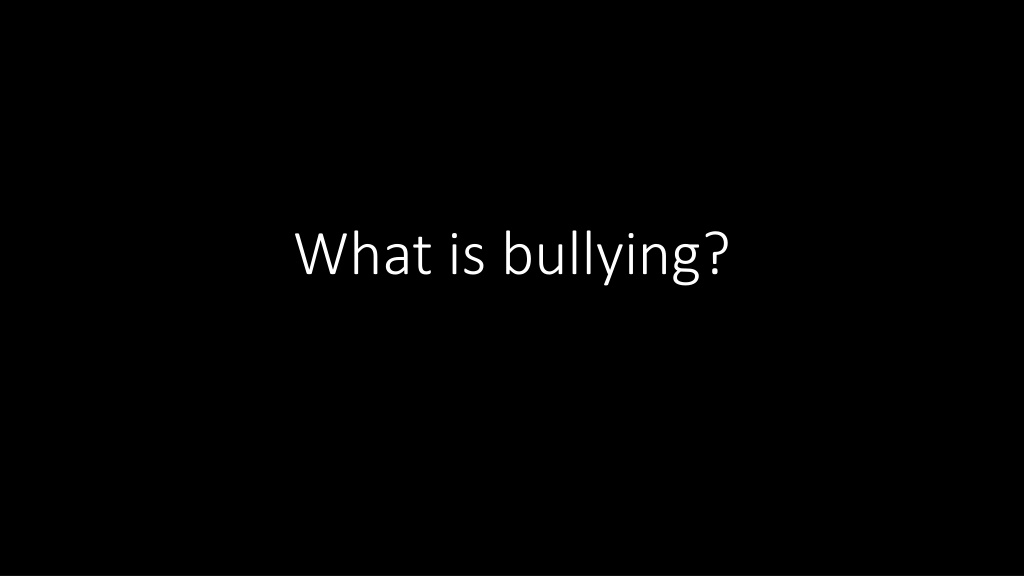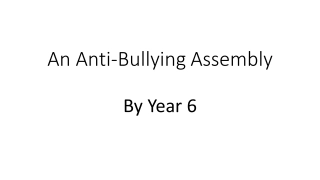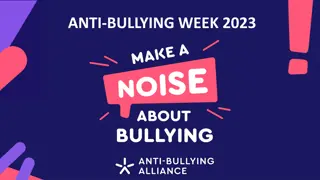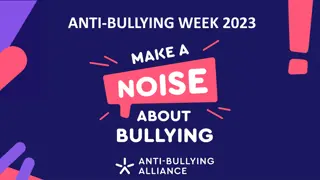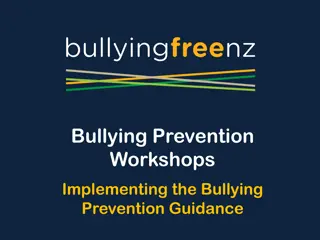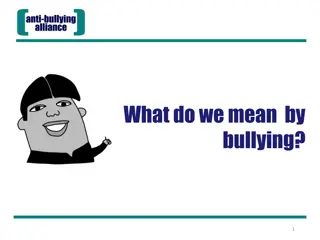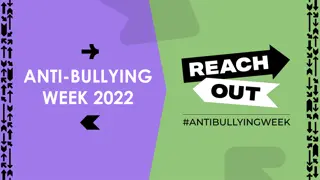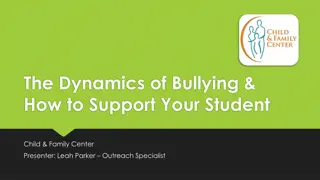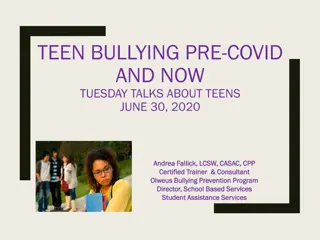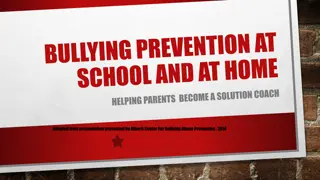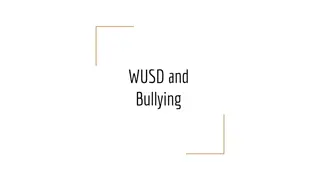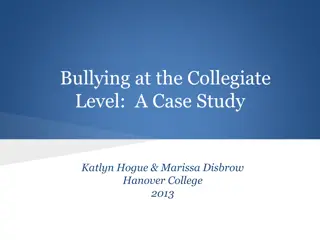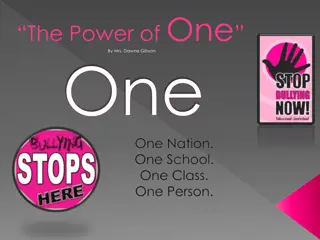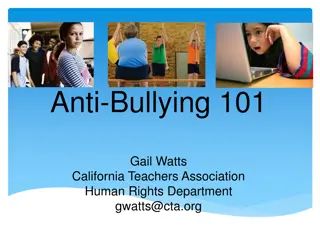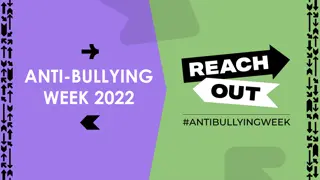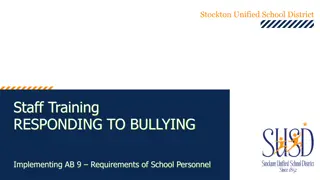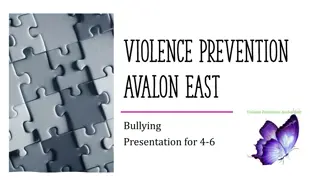Understanding Bullying: What It Is and Isn't
Bullying is deliberate behavior meant to harm or upset someone, characterized by repeated actions. It is not accidental or one-off incidents. Recognizing bullying involves understanding intent and impact, distinguishing it from mere conflicts or misunderstandings. This guide clarifies various scenarios to help differentiate between bullying and non-bullying behavior.
Uploaded on Sep 19, 2024 | 2 Views
Download Presentation

Please find below an Image/Link to download the presentation.
The content on the website is provided AS IS for your information and personal use only. It may not be sold, licensed, or shared on other websites without obtaining consent from the author. Download presentation by click this link. If you encounter any issues during the download, it is possible that the publisher has removed the file from their server.
E N D
Presentation Transcript
Can you explain what bullying is? We say bullying is behaviour that: Is deliberate it is not bullying if someone bigger than you accidentally knocks you over. Is meant to cause harm or upset if a person says something to you not realizing that it will upset you then this is not bullying. Is repeated behaviour a one-off is not usually bullying behaviour, no matter how unpleasant it may be. It may be an assault, or abuse and these are very serious matters that must be dealt with.
Are the following situations bullying? You are walking down the corridor and bump into someone accidentally. The other person turns round, calls you a name and pushes you so hard that you fall over. Answer: no, this is not bullying. The person lost their temper and behaved in an unacceptable way. If you report it they will be punished.
Your friends make up anew nick-name for you and you do not like it. You do not tell them this and they keep calling you by the name. Answer no this is not bullying because there is no intent to upset you as you have not told them how you feel. If you do make it clear that this upsets you and they continue then this could be bullying behaviour.
You fall out with your best friend and are quite nasty to each other. You then notice that other friends are ignoring you and leaving you out and when you ask why one of your friends says it is because they have all been told to stay away from you or your previous best friend will drop them. Answer - yes, this is bullying. The initial falling out and being nasty to each other wasn t bullying behaviour but your ex- friends subsequent behaviour is because they are doing it deliberately to get at you and make you unhappy.
Someone who sits next to you in some of your classes tells you they are going to ask your teachers to move them away from you because they do not like you for some reason. They do ask your teachers and then you find out the have been boasting about this to others in the class and telling them to make sure they are not made to sit near you. Answer yes, this is bullying. It is fine for pupils to not get along and want to be kept apart but it is not acceptable to involve others and encourage them to isolate you.
You fall out with your friend and for a few days you make nasty comments to each other on social media. No one else gets involved. Answer this is not bullying behaviour unless one of you stops and the other one carries it on.
What do we do at Our Ladys about bullying behaviour? We take this very seriously and your Year staff work hard to sort matters out. Our aim is always to make the situation better and get the bullying behaviour to stop. Punishing people does not usually get them to change, education is the best method. Our approach involves talking to both parties, informing parents, working with friends and sometimes putting bully and victim together. If there has been violence, racist/homophobic abuse the perpetrator will always be placed in exclusion. We then monitor for 2 weeks and revisit to see if things have improved. If not we will take further action and punish the perpetrator for not following instructions. Pupils who continue to bully, despite work being done with them, lose their places in our school (this happened to a year 8 boy last term). If someone s name appears a number of times on the anti-bullying surveys they are spoken to with their parents and told that when the survey is next done their name must not appear again. At Our Lady s, every pupil who uses violence or make racist/homophobic comments is excluded.
